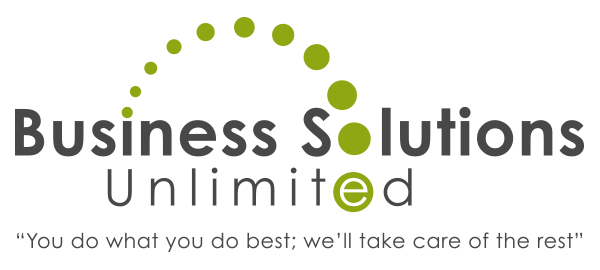
by admin
We’re experiencing an era where the term “fake news” can quickly discredit a story or the organization sharing the story.
Don’t think that fakeness and mistrust are solely focused on news organizations.
Brand communications can be swept up into the current skeptical maelstrom.
Building trust into your marketing efforts is more important than it’s ever been.
Your business communicates in an arena of online reviews and social commentary. A bad client experience can make the rounds quickly, leaving you with months of reputation repair efforts.
If you’re in business, chances are, a bad online review will happen to you. However, you’re empowered to preemptively lessen the damage an errant experience can have on your business.
All it takes is building trust with your target market and making them your advocates. Your efforts to build trust today can overwhelm negative experiences tomorrow.
How do you build ongoing trust with your marketing? Incorporate the following practices into your marketing strategy.
Know Your Target Market
Understand who you’re communicating with. Your target market wants to work with businesses that get them. This means understanding how they use specific terms and phrases, where and how they like to be communicated with and what problems they need solutions for.
When you speak their language and provide solutions they really desire, you’re taking an important step to make sure they hear that you understand them and their needs.
Once they know you know them—they’re more apt to trust the solution you provide to them.
Foster Social Proof
Nearly 90% of consumers trust online reviews just as much as personal recommendations.
Your business should make garnering positive reviews from happy customers a high priority in your marketing efforts. Check out our article on how to encourage online reviews.
Additionally, create ads, videos and blog posts that tell your customer stories. Share what problems your customer came to you with and how you went about solving it.
Encourage Content Creation from Your Customers
76% of consumers find content posted by fellow consumers to be more trustworthy than brand content. Facebook shares your customer’s posts more than posts on your business page. So, start encouraging your best customers to share their experiences with you.
If you’re a restaurant, encourage selfies and food pics.
A landscape company can create a contest for a discounted service encouraging consumers to take pictures of their yard and posting it with a hashtag branded phrase.
Building trust is an ongoing effort. It’s important to be consistent and authentic in your messaging. When your target market gets to know you and your message, they’ll more than likely head your way when they have a need for your product or service.
As a marketing virtual assistant, we can help you uncover your target audience and start building trust-oriented content. Give us a call at (904) 429-4588 and let’s see how we can help you grow your business.

by admin
Do you know where your business dollars are?
That’s a question every small and large business manager should be able to answer quickly. Knowing where your cash flow currently sits, where it is coming from and going to, are key factors to making smart decisions about your business.
Those financial answers can be found in your financial statements.
Understanding your financial statements is relatively easy—no accounting degree required.
Over the next few minutes, we’ll show you how to read your financial statements.
Let’s Start with the Purpose of Your Financial Statement
Financial statements show the status of your business financials over a period of time—monthly, quarterly and annually. You can use the data in your statement to:
- Identify trends
- Understand your business current financial condition
- Become aware of problems requiring attention
- Make decisions based on relevant and timely information
The Three Essential Financial Statements
Typically, a business will maintain the following three financial statements:
Profit and Loss Statement (P&L): Reports on business income, expenses and profits
Balance Sheet: Provides information on the financial position of your business
Cash Flow Statement: Details how much money is coming in and going out of your business
How to Read Your Profit and Loss Statement
Your P&L will show you how revenue turns into net profit. The basic structure goes as follows:
Gross Revenue: This shows all income from sales of goods or services
Cost of Goods Sold: Cost to purchase or make the product sold
Gross Profit: Revenue minus cost of goods sold
For example: You sell a hat priced at $10. The cost of the hat is $7. The gross profit would be $3.
The next section of your P&L determines your actual Net Income (profit).
Selling, General and Administrative (SG&A) Expenses: This includes your
- Office expenses for water, pens, and coffee
- Utilities such as electricity
- Salaries or wages expenses
- Rent Expense
Operating Income: Gross Profit minus SG&A Expenses
Interest Expense: Cost of debt occurred during a period of time
Income Taxes: The total amount paid in taxes during a period of time
Net Income (Profit): Operating Income minus Interest and Income Tax Expenses
How to Read Your Balance Sheet
Look at your balance sheet as a snapshot of your business financial position. Another way to put it is the balance sheet shows the net worth of your business.
The results arrive from an accounting equation:
Assets = Liabilities + Equity
The equation must always balance because assets must be funded with either liabilities or equity.
Assets are broken down into two categories:
Current Assets
(Less Than a Year) | Long-Term Assets
(More Than a Year) |
| · Cash · Accounts Receivable · Inventory | · Office Furniture · Building/Property · Equipment and Equipment Depreciation |
Liabilities are broken down into two categories:
Current Liabilities
(Less Than a Year) | Long-Term Liabilities
(Greater than a Year) |
| Accounts Payable Including: · Sales Tax Payable · Salaries Payable · Gift Certificates | This could include a long-term loan. |
Equity is broken down into two categories:
| Retained Earnings | Capital |
An Example:
If an owner invests residual income back into the business, the amount is transferred from the income statement to the balance sheet as retained earnings. | Original funding from investor or owner into the business. |
How to Read Your Cash Flow Statement
Your cash flow statement reports on three types of activities:
Operating: Information on your business cash from net income or losses
Investing: Shows cash flow from all investment activities including purchases or sales of long-term assets
Financing: Shows cash flow from all financing activities such as a bank loan
The cash flow statement top line shows a beginning balance. Then adds or subtracts amounts based on the above financial activities. The final total amount shows the amount of cash your business has on hand.
How to Get Assistance on Your Financial Statements
As virtual assistant bookkeepers, Business Solutions Unlimited is well-versed in not only reading financial statements but maintaining them as well. If you require any assistance, we’re happy to help.
Feel free to give us a call at (904) 429-4588 and let’s see how we can help your business.

by admin
On January 11, Facebook announced that the news feed we all enjoy would change to prioritize content from friends, family and groups.
Your Facebook business page content just got less organic reach—again.
What’s Facebook Looking For? More Meaningful Conversation.
According to Mark Zuckerberg, “You’ll see less public content like posts from businesses, brands, and media. The public content you see more will be held to the same standard—it should encourage meaningful interactions between people.”
In essence, Facebook is returning to its Social Network roots.
We’ll see less link-bait, political-driven, news media content. Instead, expect to see more personal content—new babies, puppies, graduations and other topics that generate engagement.
What does this Mean for Your Facebook Business Page?
As mentioned above, your already low organic reach will decrease further. Many businesses report only a 2% organic reach already. Going lower than that could be catastrophic for most small businesses—well, it’s already pretty bad.
Well, Should Businesses Just Abandon Facebook?
Not at all. A business Facebook page is still free and, in this day and age, it’s expected from consumers just as much as a website. Plus, Facebook will be continuing to strengthen its local business presence, review encouragement and online shopping platform.
Facebook isn’t abandoning businesses. You shouldn’t either. After all, your customers will still be there.
Okay, What Should Businesses Do on Facebook?
While the exact impact on business page content will not be known for a month or so, businesses should plan on updating their social media strategy to align with Facebook’s new direction.
Create Engaging, Quality Content
Actually, this should have always been a business strategy. Your content should focus on creating a conversation amongst friends and family.
- Write posts that are timely and relevant
- Ask questions
We believe local businesses will have an easier time than larger brands in generating organic engagement. Local businesses can piggyback on local events and interests.
Engage Local Clients
Now’s the time to generate local client testimonials and case studies. Encourage favorite customers to take photos or selfies in your store. If you’re a service company, give your satisfied customers an opportunity to share their story with your business on Facebook.
Go Live
Facebook favors live videos. Especially since live videos get six times more interactions than regular videos. Use that to your advantage.
For ideas on creative live Facebook videos, review our article: Ways to Use Facebook Live Videos for Your Business
Get With a Group
Facebook Groups are all about engagement and a perfect fit for businesses with expertise in group topics.
For ideas on using Facebook Groups for your business, review our article: Use Facebook Groups to Promote Your Expertise
Increase Your Ad Budget
Since organic reach will decrease, it’s assumed Facebook ad costs will increase. That means your business will need to spend more money if you desire to continue generating leads and customers from Facebook.
However, this would be an excellent opportunity to hone your audience targeting skills. Facebook offers a wealth of data to help businesses locate their target audience. For more information on using Facebook marketing resources, read our article: Why Many Small Businesses Should Market On Facebook
Reach Out For Assistance
Social media will remain an important part of your business marketing efforts. A marketing virtual assistant can help you develop content and target the right audience. Give us a call at (904) 429-4588 to learn more about how we can help you market your business.

by admin
We don’t want to worry you, but how organized are your business records?
Let’s say you get notified by the IRS of a Tax Audit for your finances from three years ago.
Do you have access to records reflecting your earnings and expenses?
If you don’t or if the records aren’t adequate for the IRS you might owe money. How much? The IRS can approximate your income based on industry standards and are under no obligation to assume any expenses to offset your revenue.
Basically, all your profit can be taxed.
As Virtual Assistants who handle bookkeeping for many small businesses, we’re often asked:
- How long should business records be kept?
- What records should a business keep?
We answer the first question with a simple statement:
Keep Receipts & Records for 7 Years
If you go to the IRS site, you’ll find they recommend keeping records for three years. That’s their Period of Limitation during which the taxpayer can amend tax returns or when the IRS can perform an audit.
So, why do we recommend seven years?
For the exceptions. This is the IRS we’re talking about and exceptions to their rules exist.
If the IRS identifies substantial errors in your tax records, they may add additional years to the audit—maybe back as far as six years.
Because of the exceptions, most bookkeeping recommendations say to keep business records for seven years.
Let’s Discuss What Records to Keep
The IRS will be looking for supporting documents to support your purchases, sales, payroll and various transactions. Supporting documents can include:
- Sales slips
- Paid bills
- Invoices
- Receipts
- Deposit slips
- Canceled Checks
The IRS goes into further details for the types of records you should keep.
Gross Receipts
This documents the income your business received. Supporting documents may include:
- Cash register tapes
- Deposit information
- Receipt books
- Invoices
- Forms 1099-MISC
Purchases
This the record of what you’ve bought and resold to customers. Supporting documents may include:
- Canceled checks or other documents that identify payee, amount, and proof of payment/electronic funds transferred
- Cash register tape receipts
- Credit card receipts and statements
- Invoices
Expenses
Other than purchases, what other expenses did your business incur? These are typically purchases of items used to operate your business – office supplies, overhead, equipment, etc. Supporting documents may include:
- Canceled checks or other documents that identify payee, amount, and proof of payment/electronic funds transferred
- Cash register tapes
- Account statements
- Credit card receipts and statements
- Invoices
- Petty cash slips for small cash payments
Travel, Transportation, Entertainment and Gift Expenses
You should keep records of the mileage you put on your vehicle when conducting business. If you dine out with a client, make note and keep receipts. You’ll be amazed at what expenses in this category can be deducted. If you’re a small business or self-employed, you owe it to yourself to review the information on the IRS site regarding travel, entertainment, gift and car expenses.
Assets
The depreciating value of the equipment and furniture your business uses can be deductible if properly recorded. Supporting document may include:
- When and how you acquired the assets
- Purchase price
- Cost of any improvements
- Section 179 deduction taken
- Deductions taken for depreciation
- Deductions taken for casualty losses, such as losses resulting from fires or storms
- How you used the asset
- When and how you disposed of the asset
- Selling price
- Expenses of sale
Employment Taxes
Employment tax records need to be well documented. This can be a complicated task if you have many employees, commissioned employees or contractors. Supporting documents may include:
- Your employer identification number.
- Amounts and dates of all wage, annuity, and pension payments.
- Amounts of tips reported.
- The fair market value of in-kind wages paid.
- Names, addresses, social security numbers, and occupations of employees and recipients.
- Any employee copies of Form W-2 that were returned to you as undeliverable.
- Dates of employment.
- Periods for which employees and recipients were paid while absent due to sickness or injury and the amount and weekly rate of payments you or third-party payers made to them.
- Copies of employees’ and recipients’ income tax withholding allowance certificates (Forms W-4, W-4P, W-4S, and W-4V).
- Dates and amounts of tax deposits you made.
- Copies of returns filed.
- Records of allocated tips.
- Records of fringe benefits provided, including substantiation.
If Record Keeping Takes Too Much Time – Outsource the Task
When you’re running or growing your business, it’s understandable that business can take a lower priority. Many times, it’s an “I’ll get to it when I have time” task.
Given the potential penalties, record keeping should be one of the highest priorities for any business. If you don’t have the time (or the passion for record keeping) do what many other businesses do—outsource record keeping.
As virtual assistant bookkeepers, we’re available to help guide you in record keeping and take on the task if needed. Feel free to give us a call at (904) 429-4588 and let’s see how we can help your business.

by admin
Not long ago, I had a conversation with a business owner who complained about how he couldn’t get around to marketing his business.
He’d paid for several marketing workshops, joined marketing mastermind groups and even subscribed to several marketing newsletters.
“I’ve got tons of marketing ideas, but no time to implement them,” he complained.
So, I suggested he outsource the marketing of his business. Let someone who had time and experience take his ideas and make them a reality.
He took my advice and outsourced his marketing to me.
Shortly thereafter, he had a website, a YouTube channel, a social media presence, templated emails, presentations, flyers and–most importantly–the marketing foundation to generate leads that can be funneled to his sales team.
Other than regularly scheduled meetings where he shared his ideas and business goals—his marketing happened while he could focus on working his business.
Benefits of Outsourcing Your Marketing
Besides saving time, a marketing virtual assistant can provide a business owner with valuable benefits:
Streamlining: Marketing is a multifaceted process that requires highly skilled and experienced personnel to carry out properly. Hiring such an individual could be well outside the budget of a small business. A virtual assistant isn’t an expensive addition to your staff.
Experienced Attention: When you outsource to a marketing expert, you get the full benefit of their knowledge, experience and time.
Increased Productivity: With your marketing being handled by someone else, you can focus on your core business and staff.
What Marketing Tasks Can You Outsource?
Pretty much any task related to attracting prospective customers can be outsourced. Some examples include:
Developing and Maintaining Your Website
An experienced marketing professional should create your site based on a content strategy that understands and speaks to your target market. Every page should include a call to action that ultimately funnels the audience to become a customer.
Additionally, maintaining a website is an important ongoing task. This can include developing new content, updating functionalities and security.
Building traffic to the site should also be a priority for your outsourced marketing.
Social Media
Social media has become very important in generating visitors to websites and in lead generation.
A marketing virtual assistant can be invaluable, developing content to post to engaging your social media community.
Additionally, social media advertising can be a great way to generate leads. Your marketing virtual assistant should understand how to create ads and target demographics in social media networks like Facebook.
Emails & Text Messaging
Creating copy for emails and text messaging can be challenging—especially when developing a campaign. An experienced marketer can help create a series of content targeting your prospective or existing customer that ultimately leads them to an eventual conversion.
Is a Marketing Virtual Assistant Right for Your Business?
We can help you with that decision. Give us a call at (904) 429-4588 and let’s see if a virtual assistant can help you save time and grow your business.
Page 10 of 11« First«...7891011» 




